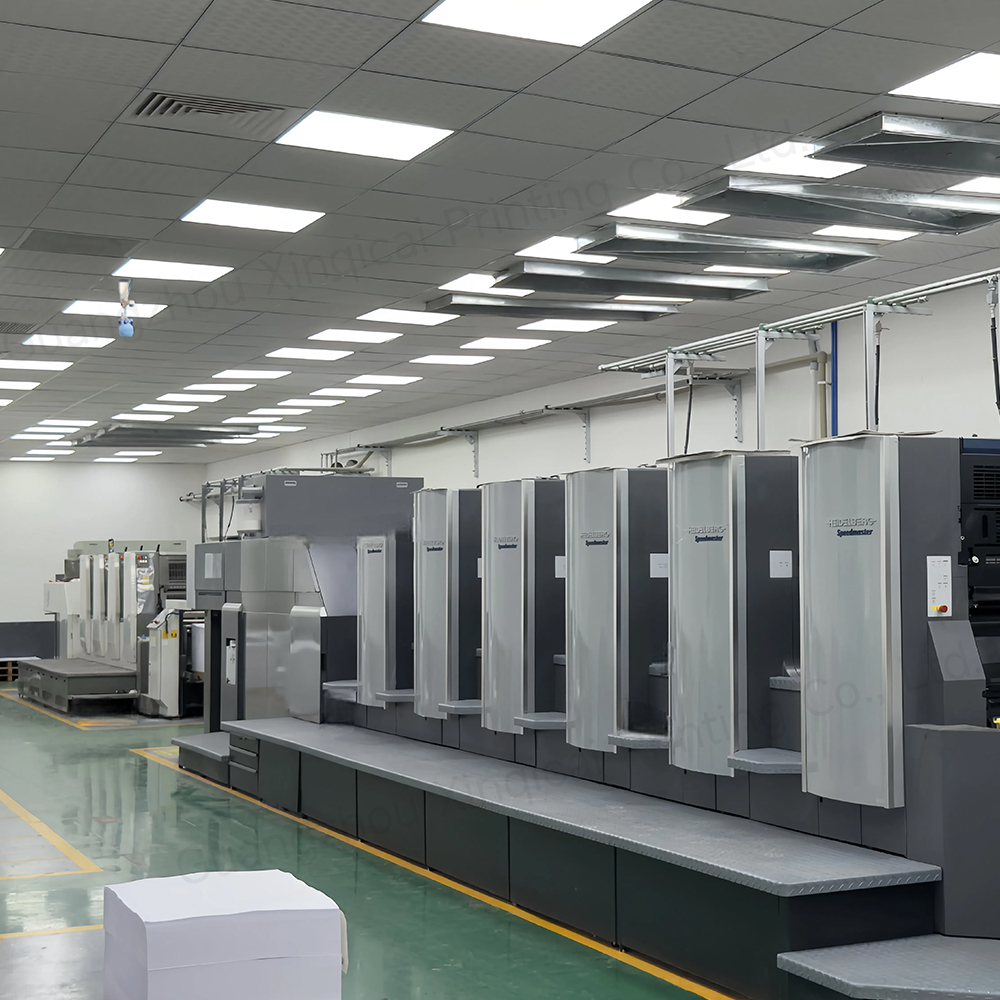In the United States, 182 printing company leaders reported that evolving consumer demand for printing is forcing them to accelerate transformation and upgrades. What implications does this hold for Chinese printing companies? You must read the following survey report!

Recently, Printing Impressions magazine released a survey report based on interviews with 182 printing company leaders.
The results show that evolving consumer demand for printing is increasingly impacting the US printing industry, forcing companies to accelerate transformation and upgrades. This is helping them surpass competitors with new services and more competitive strategies, while also helping business decision-makers more quickly understand and identify customer needs for value-added printing services and ordering preferences.
The 182 companies surveyed by Printing Impressions magazine include 128 (approximately 70%) commercial printers (including offset and digital printers), 19 (10%) specialty printers, 10 (5%) newspaper and magazine publishing printers, 7 (4%) direct mail printers, 7 (4%) print marketing companies, 7 (4%) wide-format signage printers, and 4 (2%) express and franchise printers.
Trend 1: Service Upgrades Accelerate the Creation of Competitive Advantage
Four factors stand out: price competition, declining demand for paper printing, differentiated competition, and the challenge posed by digital media to print media. More than half of the respondents stated that the decline in print usage has had a certain impact on industry development. A large number of printing companies are facing difficulties in positioning their business. 75% of respondents stated that differentiated competition is one of the major challenges currently facing printing companies.
In the survey on "Challenges Facing Printing Companies," respondents cited price competition, declining demand for paper printing, differentiated competition, and the challenge posed by digital media to print media as the most prominent factors.
Over half of the respondents stated that the decline in printed material usage has had a certain impact on industry development. Forty-four percent believe that the decline in the US printing industry and the downward trend in business volume have eased somewhat, and that market demand for printed products is currently stabilizing, indicating ample opportunities for growth in the printing industry.
At the same time, many printing companies face a dilemma in business positioning. Fifty percent of respondents stated that their companies have yet to find effective competitive differentiation and still have a long way to go in identifying their business positioning and achieving sustainable development. Seventy-seven percent stated that their companies are continuously expanding their printing business scope, and 76% stated that they have undergone new restructuring and integration of their product operations.
According to the survey, 75% of respondents stated that competitive differentiation is one of the major challenges currently facing printing companies. Many companies often resort to price wars to quickly enter new product markets. However, 25% still believe that competition in their own markets is not intense and that pricing pressure is not significant. Seventy-three percent of respondents stated that customers are increasingly demanding product production cycles and delivery times, while 62% stated that companies often need to provide additional services such as warehousing, digital asset management, and database management.
However, it is foreseeable that with the digitization and automation of printing manufacturing and related workflows, printing companies will have a more urgent need for data management. This process will provide digital printing companies with greater development opportunities and serve as a means for businesses to transform, upgrade, and enhance their services.
Over half of the commercial printing companies surveyed stated that clients have strong demand for packaging printing services.
The survey results show that commercial printing companies are increasingly seeking to expand into packaging printing, particularly for folding cartons and labels. Furthermore, the survey shows that 64% of commercial printing companies are beginning to deploy narrow-web flexo presses, digital presses, or hybrid presses capable of both flexo and digital printing to meet the growing demand for label printing.
Furthermore, 47% of respondents believe that the rapid development of digital media continues to impact the printing industry.
However, companies surveyed with year-on-year sales growth of more than 10% tend not to be intimidated by competition from digital media. This is primarily due to the fact that these companies' services extend beyond simple printing production. Sales revenue from value-added services offsets losses in their core business, placing them in a more advantageous competitive position compared to other printing companies.
Trend 2: Increased Demand for Just-in-Time Ordering and Shorter Delivery Cycles
Over the next two years, the volume of orders generated through online ordering systems will increase to 26%. Companies with sales between $100 million and $500 million tend to implement online printing services earlier, but revenue from this business has plateaued. 36% of respondents define their companies as marketing service providers, while 26% are transitioning to low-cost manufacturers to secure stable customer relationships.
According to the survey, 87% of respondents stated that customers request quotes via email and use them as a basis for ordering products and services; 76% stated that customers often communicate with sales representatives over the phone; and 58% stated that customers prefer face-to-face meetings with sales representatives when purchasing printing services. Furthermore, only 32% of respondents stated that their customers place orders through e-commerce platforms, 18% use public online printing platforms, and 12% use mobile apps.
Contrary to survey expectations, while online ordering of print products is becoming increasingly common, many customers still prefer to contact print sales staff or representatives directly.
Some respondents stated that many frequent business clients are accustomed to speaking directly with sales staff and prefer face-to-face meetings, often resulting in relatively favorable sales prices.
At the same time, more respondents indicated that, due to the faster order processing offered by online ordering, printers are seeing a steady increase in orders from e-commerce platforms. Over the next few years, the proportion of customers placing orders through online ordering systems, such as e-commerce, will continue to rise. The report indicates that within the next two years, the volume of orders generated by online ordering systems will rise to 26%.
Given the robust growth of mobile internet, the majority of companies surveyed indicated they would explore online solutions, which offer significant benefits.
According to the survey, 49% of respondents reported more automated workflows, 48% reported gaining new customers, 40% reported a shortened purchasing process, 37% reported accelerated order automation, and 35% reported an increase in order volume.
Compared to smaller printers, companies with sales between $100 million and $500 million tended to implement online printing services earlier, but have reached a plateau in revenue from this business, leading them to explore more non-traditional service areas.
At the same time, with the prevalence of online ordering, demand for just-in-time orders is increasing, shortening delivery cycles. 52% of respondents reported an increase in customer demand for just-in-time orders, and 68% reported an increase in the number of short-run orders. With customer demands for shorter production cycles (73%), shorter run times, more personalized printing, and enhanced brand image promotion, printing companies need to invest more in cost and inventory control, shortening delivery cycles, and reducing rework rates.
In a survey of 182 companies on their future development strategies, 77% of respondents indicated they have begun expanding their business scope, while 76% are exploring a variety of business portfolio models to provide customers with one-stop solutions. Additionally, some companies are adopting strategies such as focused marketing, technology investment, and differentiated competition in specific verticals.
The survey shows that 36% of respondents define their companies as marketing service providers, while 26% are transitioning to low-cost manufacturers to secure stable customer relationships. In the survey, the vast majority of respondents believe that printing companies need to continuously expand their business areas and offer a wider variety of printed products to meet evolving customer needs. Driven by market forces, printing companies are constantly adjusting their business models to adapt to new demands.
Trend 3: Leveraging Value-Added Services to Gain Market Share
The most popular printed products include marketing and promotional materials, direct mail, mail, postcards, and printed signage. Brand clients are also experiencing a sharp increase in demand for ancillary services such as art design, creative packaging, and media promotion services. In practice, printing companies often offer online business management services through online stores or e-commerce solutions.
According to the survey results, the most popular printed products among customers include marketing and promotional materials, direct mail, mail, postcards, and printed signage.
Direct mail products, because they are delivered directly to home mailboxes, are more targeted to consumers and are more readily accepted by consumers than emails, which are easily filtered into spam folders. Therefore, direct mail products require more personalized designs to meet the needs of consumers of different ages and occupations. Digital printing will be widely utilized in this process.
Postcards and business cards, printed materials containing personal or business contact information, are portable, customizable, and affordable, leading to a steady increase in demand. With the rapid development of information technology, more and more brands are incorporating official website QR codes, coupon codes, and even NFC tags on their business cards to attract consumers to their products and services. Digital printing, with its shorter production cycles and ability to customize, also plays a significant role in this market.
Signage also plays a significant role in attracting consumer attention and driving purchases. Global consumption of printed signage is projected to reach 13.6 billion square meters by 2020. Furthermore, the indoor signage printing market is expected to grow faster than the outdoor signage market, and demand for printed signage products in the grocery retail industry is expected to steadily increase. Within this market, wide-format inkjet printing equipment is increasingly being used for printing signs, banners, and other items.
In addition to demand for printed products, brand clients are also seeing a sharp increase in demand for ancillary services such as art design, creative packaging, and media promotion.
The survey results show that brand clients primarily seek value-added services from printing companies, including art design and creative services (73%), mailing services (69%), consumer satisfaction surveys (65%), media promotion services (52%), e-commerce services (31%), online printing services (30%), database management and statistics services (20%), social media promotion services (16%), website design services (16%), and cross-media marketing services (15%). Among the printing companies surveyed, those experiencing stable sales growth are more likely to offer these value-added services to their clients, mitigating the impact of price competition, increasing product value-added, and ultimately gaining market share.
The report indicates that companies offering value-added services can choose to expand into new business or outsource services. They can offer a one-stop solution or allow clients to select or combine value-added services. In actual operations, Indian companies often use online stores or e-commerce solutions to open Internet business management services for customers, allowing customers to order on demand and conduct supply chain traceability, workflow tracking and business management.

